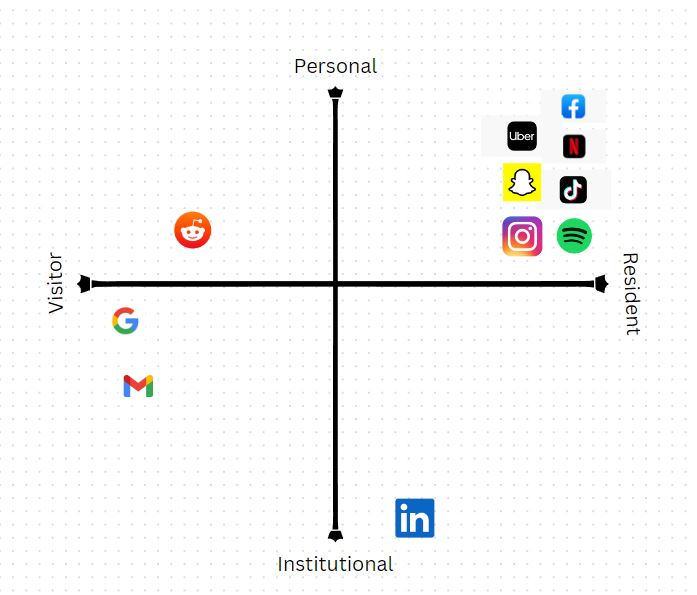My V+R Map

- What digital platforms are students currently using to develop their professional network?
Students are primarily using Linkedin to develop their professional network. Linkedin is designed to serve as a way to show one’s profile, expertise, recommendations and connections related to the professional job market. It also lists the credibility of the student in their industry and features all their volunteer,school, and job related achievements. Linkedin is a must have professional networking tool for students as many hiring managers and recruiters use it as a first step for evaluate one’s knowledge, credibility and leadership expertise and how it will fit into their brand/company. Additionally, students can use it as research tool for further information on certain companies, use it for job hunting, and/or join social groups with similar professional interests to expand your social network.
Another digital method commonly used by students to professionally network is Instagram. Instagram gives students the ability to follow brands and people the industry of their interest. This allows one to stay up to date with information about their industry. One could also use the direct messaging feature to ask questions or propose a business idea to a brand/company. Alternatively, use of the commenting and tagging feature on posts or stories can be another way of communicating and networking with these brands/companies.
- What could the student consider in expanding their professional learning network?
Students could consider non-traditional ways of expanding their professional learning network. A lot of students only consider professional networking platforms that were traditionally designed for professional use only such as Linkedin to do most of their professional networking. However, I believe a student should consider introducing their professional footprint on other non-traditionally professional networking platforms such as Snapchat,Facebook, or YouTube. A lot of these other apps are more personalized than Linkedin and can reach a bigger/different audience than Linkedin. Because they are more personalized, students can show a more creativity approach to professional networking that involves more of their own personality. An example would be using Snapchat to promote music talent/ sales; not a traditionally professional platform, but still gives exposure to one’s expertise and achievements and can reach a different audience than a platform such as Linkedin.
- Thread Discussion: How do data privacy and security limit and promote a PLN? In your network, how can you create a digital identity/ reputation?
The reason why certain PLNs such as Snapchat, Instagram, Twitter, and Linkedin are mainstream is because we trust their ability to keep our data to be private and secure. Yes they have many useful and unique features to their platforms,however, they are many other smaller applications that feature similar or better features. But we often don’t trust them as much because of their lack of reputation in keeping user data secure. We value data security so much so in PLN, that certain applications lose users and popularity if evidence is found that data security is faulty or data is leaked. When Facebook was sued for have misleading claims of data privacy and security and exposed for data mining, it decreased the platform’s popularity a bit because users were now skeptical about data security and may feel unsafe when using the application. In my own network, I would try to create digital footprint that showcases professionalism but also includes some of my own personality and hobbies. I would post things and topics I am passionate about such as camping,hiking, painting, and working out on my stories on Instagram or Snapchat. I would be cautious about what I post and make sure it’s not controversial in nature or could impact future job implications. This would allow me to use my digital networking for both social ( keeping up with friends who share my interest) uses or professional ( employers viewing my content) uses.
Leave a Reply